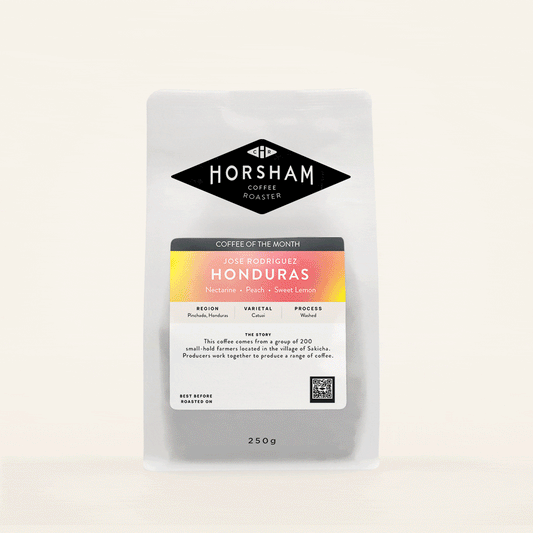From juicy and fruity to crisp and clean, the way coffee is processed after harvest plays a huge part in how it tastes in your cup. In the world of specialty coffee, processing is one of the most fascinating, and flavour-defining, parts of the journey.
At Horsham Coffee Roaster, we work closely with producers across Rwanda, Brazil, Costa Rica and beyond who utilise both classic and experimental processing techniques. Let’s dive into the three most common methods you’ll come across – washed, honey, and natural – plus a look at some lesser-known approaches.
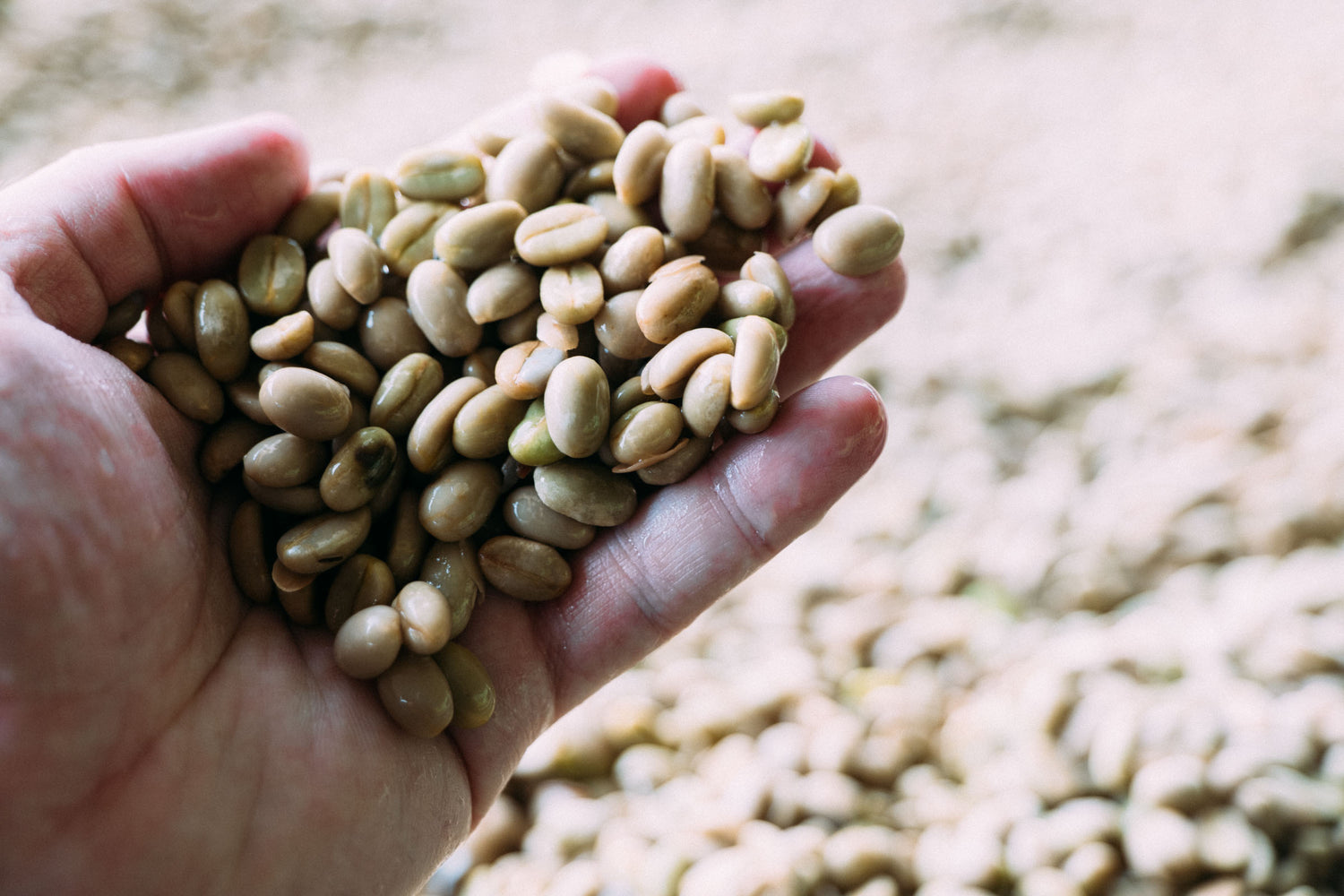
Washed Process (Wet Process)
The washed method is widely used across the specialty coffee world and remains one of the most effective ways to highlight a coffee’s intrinsic clarity and acidity. This method relies on water to separate, ferment and clean the beans, and when carried out with precision, it produces elegant, bright and complex flavour profiles.
This process requires a lot of water, so it’s only suitable in areas with good supply – and the wastewater must be treated to avoid environmental harm.
Flavour Profile: Juicy, floral and citrus-led with crisp acidity and tea-like body.
Case Study: Washed Coffee Processing at Bwishaza
At Bwishaza Washing Station in Rwanda, this process is executed with impressive attention to detail.
Here’s how the process works at Bwishaza:
- Floatation: On delivery, cherries are floated in water to remove underripe or damaged fruit.
- Depulping & Fermentation: The fruit is removed using mechanical pulpers, and the beans are dry fermented for around 12 hours in tiled tanks.
- Grading & Washing: After fermentation, the beans are washed and passed through grading channels that separate beans by density.
- Drying: The coffee begins drying under shade for 48 hours, then is moved to raised beds in the sun until it reaches around 12% moisture.
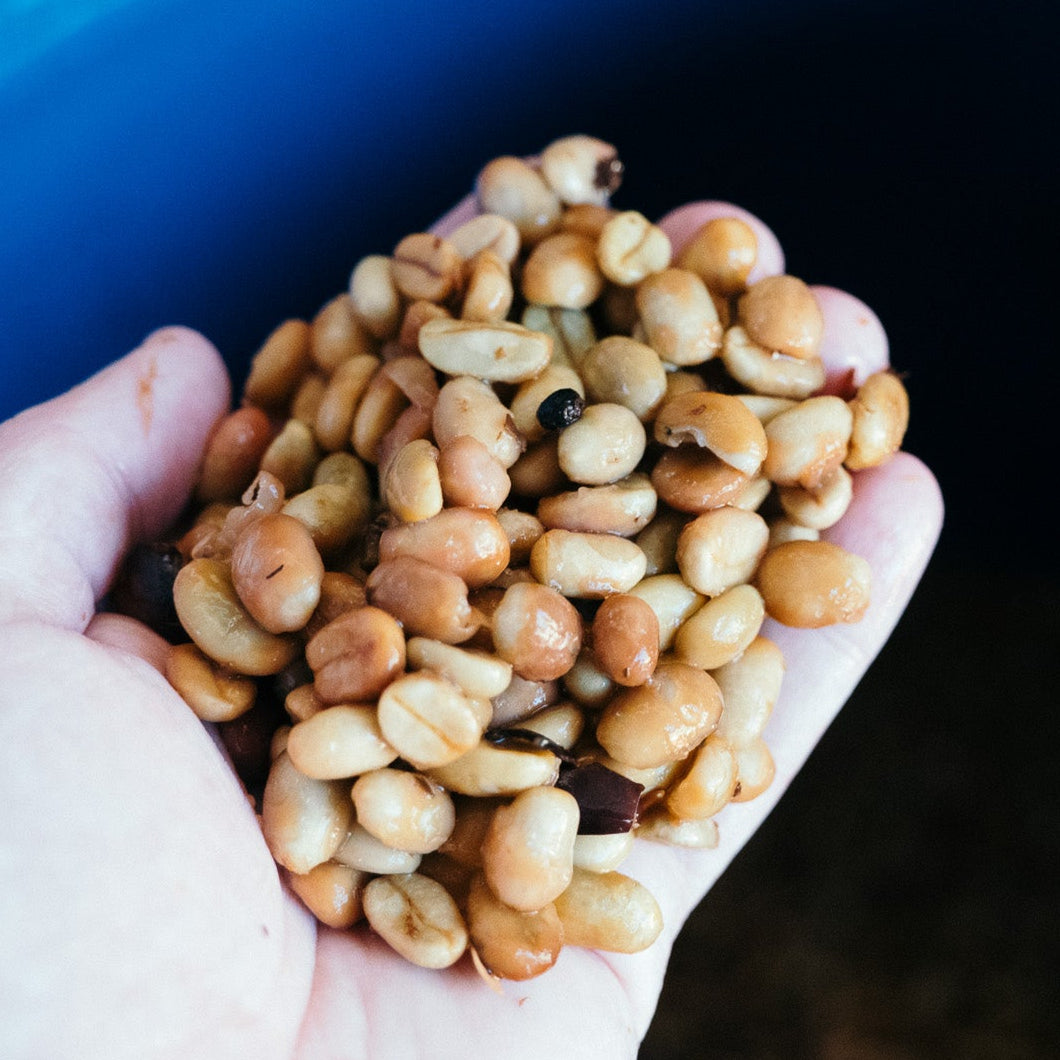
Honey Process (Pulped Natural)
The honey process is a hybrid method that balances the cleanliness of washed coffees with the fruity sweetness of naturals. After removing the cherry skin, producers leave a portion of sticky mucilage (the "honey") on the bean during drying. This remaining fruit layer has a major impact on the final flavour.
Flavour Profile: Bright fruit, juicy sweetness and syrupy mouthfeel.
Common Honey Process Categories:
One of the things that makes honey processing so fascinating is the variety of styles, particularly across Central America. These are typically defined by the amount of mucilage left on the bean and sometimes by the drying technique.
- Yellow Honey: Most mucilage removed, dried quickly with frequent turning. Clean and mild sweetness.
- Red Honey: Moderate mucilage, slower drying with less movement. Deeper sweetness and fruity complexity.
- Black Honey: Most mucilage retained, dried slowly with minimal turning. Rich, jammy flavours with heavier body.
Case Study: Red Honey Coffee Processing at San Juanillo
At San Juanillo in Costa Rica, we’ve sourced exceptional Red Honey coffee from the Marsallesa varietal:
- Harvesting: Hand-picked by experienced workers selecting only ripe cherries.
- Floatation & Fermentation: Cherries are floated to remove defects, then fermented whole for 12–16 hours.
- Pulping & Drying: Cherries are depulped and dried on raised beds for two days, followed by final drying on patios.
This process enhances sweetness and structure while maintaining clarity – a hallmark of Costa Rica’s best honey coffees.
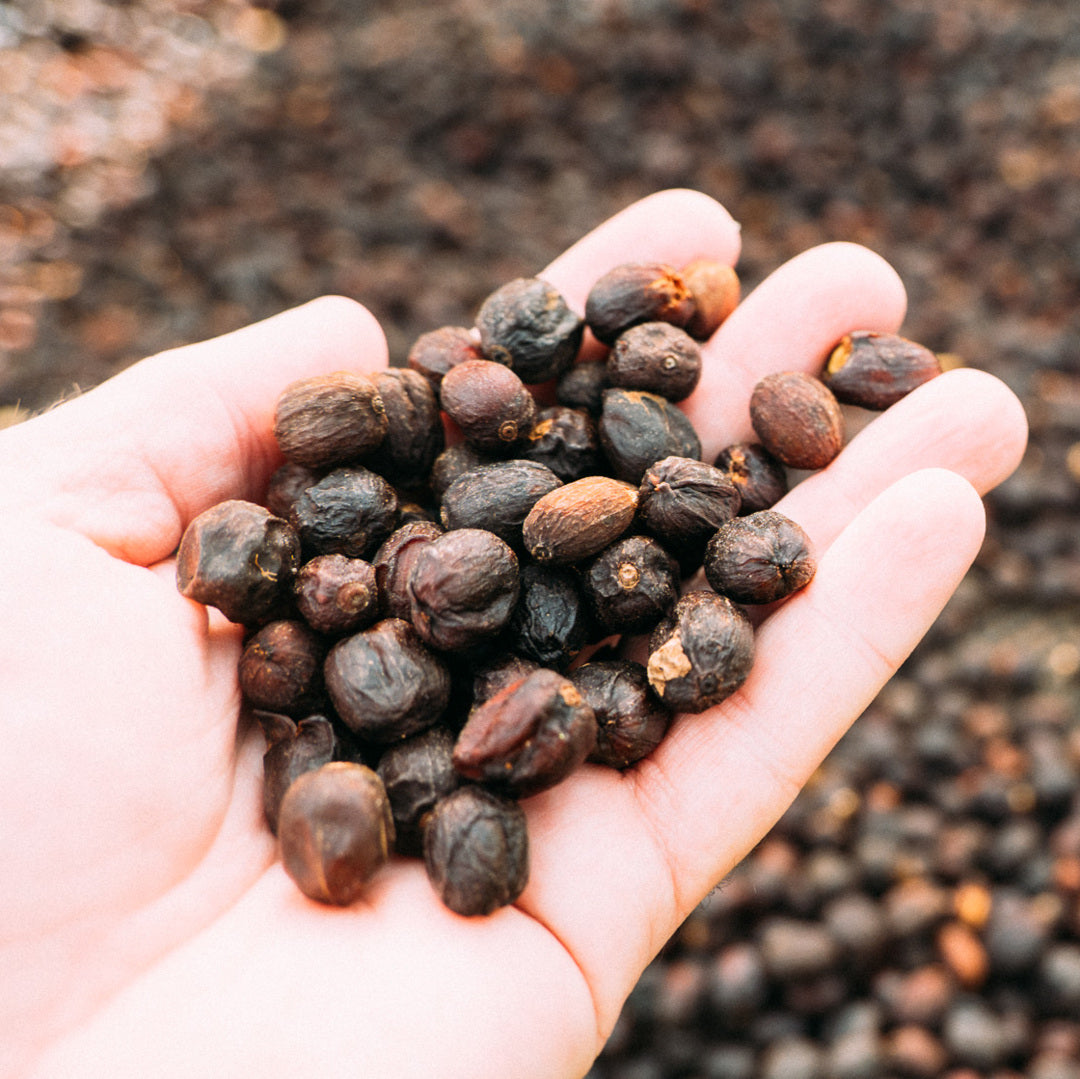
Natural Process (Dry Process)
The natural process is one of the oldest and most traditional methods. It involves drying the whole cherry – skin, pulp and all – around the bean. When executed with care, this method can produce incredibly fruity, full-bodied coffees.
Flavour Profile: Full-bodied with notes of chocolate, red fruits and stone fruit.
Case Study: Natural Coffee Processing at Fazenda Inhame
At Fazenda Inhame, a family-run farm near Campos Altos in Brazil, the natural method is used to produce some of the country’s most consistently high-quality coffees.
Here’s how the natural process works at Fazenda Inhame:
- Harvesting: A selective mechanical approach picks only ripe cherries.
- Initial Drying: Cherries are laid out on concrete patios and turned regularly to prevent over-fermentation.
- Mechanical Drying: Once moisture hits around 30%, cherries are moved to mechanical dryers to finish at 12%.
- Final Prep: Beans are milled to remove defects and packed in eco-conscious, freshness-preserving bags.
Processing Method Comparison Table
| Feature | Washed | Honey | Natural |
|---|---|---|---|
| Water Requirement | High | Low to moderate | Very low |
| Key Flavour Notes | Clean, floral, citrus | Sweet, fruity, rounded | Bold, berry, wine-like |
| Body | Light to medium | Medium to full | Full |
| Climate Suitability | Needs water access | Flexible | Dry climates preferred |

Experimental & Emerging Methods
Innovation in coffee processing is rapidly growing, and producers are exploring new ways to push flavour boundaries.
Some lesser-known methods include:
- Anaerobic Fermentation: Coffee fermented in sealed, oxygen-free tanks for intense, often spiced profiles.
- Carbonic Maceration: Inspired by winemaking, whole cherries are fermented before drying, creating some incredible, vibrant, juicy flavours.
- Yeast-Inoculated Fermentation: Selected yeasts guide fermentation for enhanced control and complexity.
- Thermal Shock: Rapid temperature changes during fermentation to intensify sweetness or structure.
Pictured: Cherries fermenting within sealed tanks at Inhame, Brazil.
Why Processing Matters
Processing is one of the most important contributors to a coffee’s flavour profile. Understanding processing can help you explore new styles and deepen your appreciation for the craft.
We feature a wide range of processing styles in our Single Origin Selection and Coffee of the Month Subscription, often including experimental lots that are exclusive to our offering.
Our Single Origin Coffees
-
Horsham Coffee Roaster
Coffee of the Month Subscription
Regular price From £10.25Regular priceUnit price per -
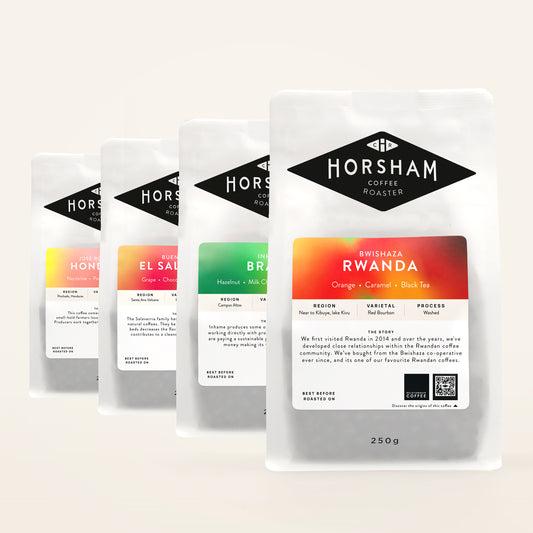 10% OFFHorsham Coffee Roaster
10% OFFHorsham Coffee RoasterSingle Origin Coffee Selection
Regular price £43.85Regular priceUnit price per£48.72Sale price £43.85Sale -
Red Grape | Fig | Dates
La Karola Natural - Christmas Single Origin Costa Rica | Natural
Regular price From £14.25Regular priceUnit price per

